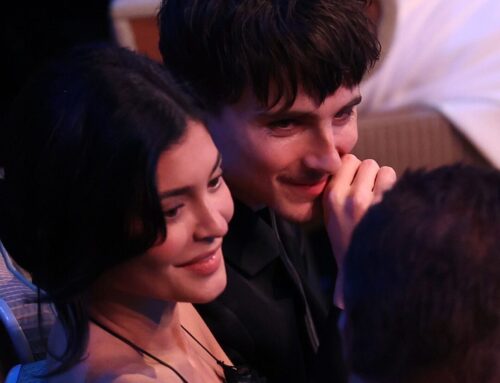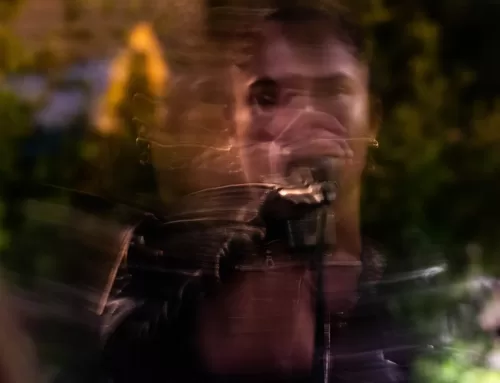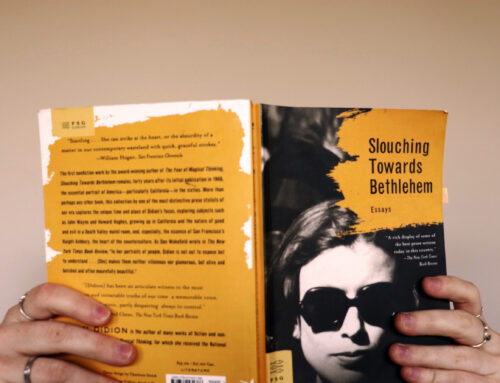
Parthenope is obsessed with beauty: the beauty of summer, youth, Naples, its titular character. The 136-minute-long film shaves off any extraneous plot to reveal a narrative concerned with the life of an exceptionally enchanting single woman. Portrayed by Celeste Dalla Porta, we follow the life of Parthenope, from birth to old age, as she navigates the male-dominated world of Italy from the second half of the 20th century up until the present.
In many ways, Parthenope is a watermark of Paulo Sorrentino’s oeuvre. At the film’s beginning, her Neopolitan family’s economic status, youth, and celestial beauty cast her on a privileged journey to discover her purpose in life, flitting in and out of spaces—and the arms of men—with indulgent aimlessness. Eventually, Parthenope decides to study anthropology at a university, and there, she meets the reserved and grouchy professor, Devoto Marotta, who becomes her mentor. As one of the only men in the film who does not overtly sexualize Parthenope, Devoto provides the film with a brief respite from the male gaze. But it is only for a few scenes, and only brushes the surface.
Sorrentino’s film is a reminder that we have not yet escaped the Italian cinematic tradition of objectifying women as statuesque, goddess-like figures. Federico Fellini, who was born in 1920 and actively worked between the 50s and 70s, is one of the most famous Italian directors to date and a precursor to Sorrentino. His oeuvre demonstrates the gendered split between the active/male and passive/female pleasures in viewing. La Dolce Vita (1960), for all of its criticism of Italian machismo culture, accessorizes its male protagonist Marcello Rubini with female characters (Emma, Maddalena, and Sylvia) who exist only within the context of his eroticism; when he doesn’t want to sleep with them, they disappear from the screen. Fellini and now, Sorrentino, appear to fall into the same trap: they become participants in the very culture they sought to satirize. There are no alternatives to their criticisms, no representations of women that resist the projection of male fantasies.
While Parthenope is named after the siren in a Greek legend who drowns herself off the coast of Naples after Odysseus rejects the allure of her voice, Sorrentino’s character is draped in silence. Her silence may be interpreted as her refusal of the men who throw themselves at her. Or a silence that represents her complacency, which results in her being dominated and consumed by them.
The film, faultily, appears innocent of either stance, and what is left in the silence and mystery that Sorrentino is so interested in is weak—and ultimately, sexist, visual language: extended shots of Parthenope posing for the camera, rising from the blue waters of Naples like a divine vision, and the very troubling fact that in almost every scene, she is accompanied by a man—ranging from her close friend Sandrino, to Raimondo, her brother who falls in love with her enchantments, to a corrupt bishop who Parthenope sleeps with towards the movie’s end.
Sorrentino is too preoccupied with constructing his protagonist as an abstraction—a femme fatale stock character—that any attempt to criticize tropes of femininity falls flat. The shots of her are at times so readily reducible to the conventions of commercial luxury advertising that a passing viewer would be surprised to find out they are watching an A24 movie. Indeed, it is a film co-produced by Saint Laurent.
With a character that is as silent and as shrouded in mystery as Parthenope, there is little attempt made to counteract the male gaze, both in front of and behind the camera’s lens. Sorrentino appropriates Parthenope’s physical body as a canvas to insert the social commentary he is interested in—contemporary life in his home city of Naples, the contradictions inherent in Italian society, religion’s shortcomings, and hedonism. Seeing her native home through Parthenope’s eyes could have been powerful on its own, but it’s clear that Sorrentino struggled to authentically inhabit the perspective of a young woman, instead projecting his own subjectivity onto her. Instead of a character, we are given a symbol.
The result is a hollowed-out protagonist who Sorrentino attempts to redeem through her time at university. But even that is frustratingly inaccurate. Parthenope’s relationship with Devoto develops out of the feigned ignorance she presents to him and a number of other male suitors. When asked what anthropology is, during Parthenope’s entrance exam, she responds by saying, “I don’t know.” It is those three words that ignite the connection between Parthenope and Devoto. The line between intellectual curiosity and simplistic attraction to her perceived impressionability is blurry. There is a disturbing realization that even the professor, an academic figure much like Sorrentino, is drawn to Parthenope’s exoticized passivity.
Parthenope is a nostalgic film saturated by stunning visuals. At its strongest, the film meditates on the fleeting nature of youth, memory, and beauty. But instead of coexisting with these ideas, Parthenope becomes consumed—and ultimately limited—by them. Sorrentino’s aesthetic obsession with Parthenope’s image traps her within the very objectification it gestures against, leaving the viewer with a lingering sense of visual indulgence at the expense of genuine character exploration. She does not overcome, and sadly personifies, the male inclination to condense the complexities and contradictions of personhood within the female body to make her readily intelligible and accessible to a male gaze.




Leave A Comment